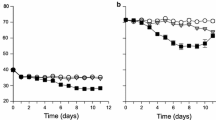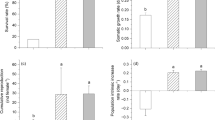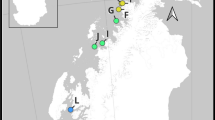Abstract
The natural carbon and nitrogen stable isotope ratios (δ13C, δ15N) of various autotrophs and heterotrophs were measured in a Syringodium isoetifolium-dominated seagrass bed at Dravuni Island, Fiji to define carbon and nitrogen sources for heterotrophic organisms in a system where few animals graze directly on seagrass leaves. The organic carbon, nitrogen, and phosphorus content of organisms was also determined. The δ13C and δ15N data suggest that herbivorous heterotrophs in this seagrass bed depend significantly on epiphytic cyanobacteria rather than seagrass leaves and its detritus. This can be attributed to relative differences in nitrogen content of those organic materials. The cyanobacteria nitrogen content (3.6–4.8% of DW) is nearly half that of heterotrophs (7.0–8.6% N of DW) while that of S. isoetifolium origin (0.6–1.1% N of DW) is less than one third of the cyanobacteria nitrogen content. Phosphorus content was similar among cyanobacteria (0.8–1.1 mg g-1) and S. isoetifolium (0.4–1.4 mg g-1). These results suggest that cyanobacteria are important food sources for heterotrophs at the study site, and that inorganic nitrogen released through breakdown of cyanobacteria by heterotrophs may support the continued production of S. isoetifolium.
Similar content being viewed by others
Author information
Authors and Affiliations
Additional information
Accepted: 24 May 1999
Rights and permissions
About this article
Cite this article
Yamamuro, M. Importance of epiphytic cyanobacteria as food sources for heterotrophs in a tropical seagrass bed. Coral Reefs 18, 263–271 (1999). https://doi.org/10.1007/s003380050191
Issue Date:
DOI: https://doi.org/10.1007/s003380050191




